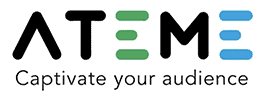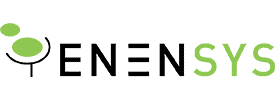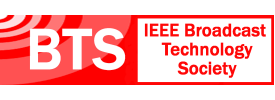- About
- Members
- Sponsors
- Subcommittees
- Technical Documents
- News
- Events
- Spotlight ATSC 3.0
- Contact Us
- Member Login
- Member Meetings
- Advanced Search
Search Site
Member Links
- About
- Members
- Sponsors
- Subcommittees
- Technical Documents
- News
- Events
- Spotlight ATSC 3.0
- Contact Us
- Member Login
- Member Meetings
- Advanced Search
Term
interaction channel
Posted on April 1, 2015 in
A digital medium that transports digital data from servers to clients and vice versa. An interaction channel is a logical construct built on top of physical channels.
independent channel
Posted on April 1, 2015 in
A channel whose high frequency information is not combined into the coupling channel. (The lfe channel is always independent.)
implied resource
Posted on April 1, 2015 in
An application resource whose content is not manifested directly to an application or application environment, but instead is visible only to the receiver platform.
implementation-defined facility
Posted on April 1, 2015 in
A facility defined by an implementer of a DASE System.
hybrid procedural application
Posted on April 1, 2015 in
A procedural application that makes use of markup content; a Java Xlet that creates and causes the display of an XDML document instance is an example of a hybrid procedural application.
hybrid declarative application
Posted on April 1, 2015 in
A declarative application that makes use of active object content; an XDML document with an embedded Java Xlet is an example of a hybrid declarative application.
hybrid application
Posted on April 1, 2015 in
A hybrid declarative application or a hybrid procedural application.
Huffman coding
Posted on April 1, 2015 in
A type of source coding that uses codes of different lengths to represent symbols which have unequal likelihood of occurrence.
host
Posted on April 1, 2015 in
A device where module(s) can be connected. For example, a television, an integrated receiver-decoder, or a PC.
high-definition television
Posted on April 1, 2015 in
High-definition television provides significantly improved picture quality relative to conventional (analog NTSC) television and a wide screen format (16:9 aspect ratio). The ATSC Standard enables transmission of HDTV pictures at several frame rates and one of two picture formats; these are listed in the top two lines of Table 5.1. The ATSC Standard also enables […]
News Categories
News Archives
Subscribe
Subscribe to The Standard, our monthly newsletter. Learn More
Join ATSC
ATSC is a membership organization with both voting and observer categories. Voting members include corporations, nonprofit organizations, and government entities, and they participate actively in the work of ATSC. Observers are individuals or entities not eligible to be a voting member.
Subscribe to our Newsletter
Subscribe to The Standard, our monthly newsletter, to stay up-to-date with ATSC news and events around the world.
Site Links
Contact Us
ATSC
1300 I Street NW, Suite 400E
Washington, DC 20005
Do you have questions about ATSC?
About ATSC
ATSC, the Broadcast Standards Association, is an international, non-profit organization developing voluntary standards and recommended practices for digital terrestrial broadcasting. Serving as an essential force in the broadcasting industry, ATSC guides the seamless integration of broadcast and telecom standards to drive the industry forward. Currently, the ATSC 3.0 Standard is providing the best possible solution for expanding the potential of the broadcast spectrum beyond its traditional application to meet changing needs. From conventional television to innovative digital data services, ATSC has one clear goal: to empower the broadcasting ecosystem like never before.
© 2025 ATSC




































